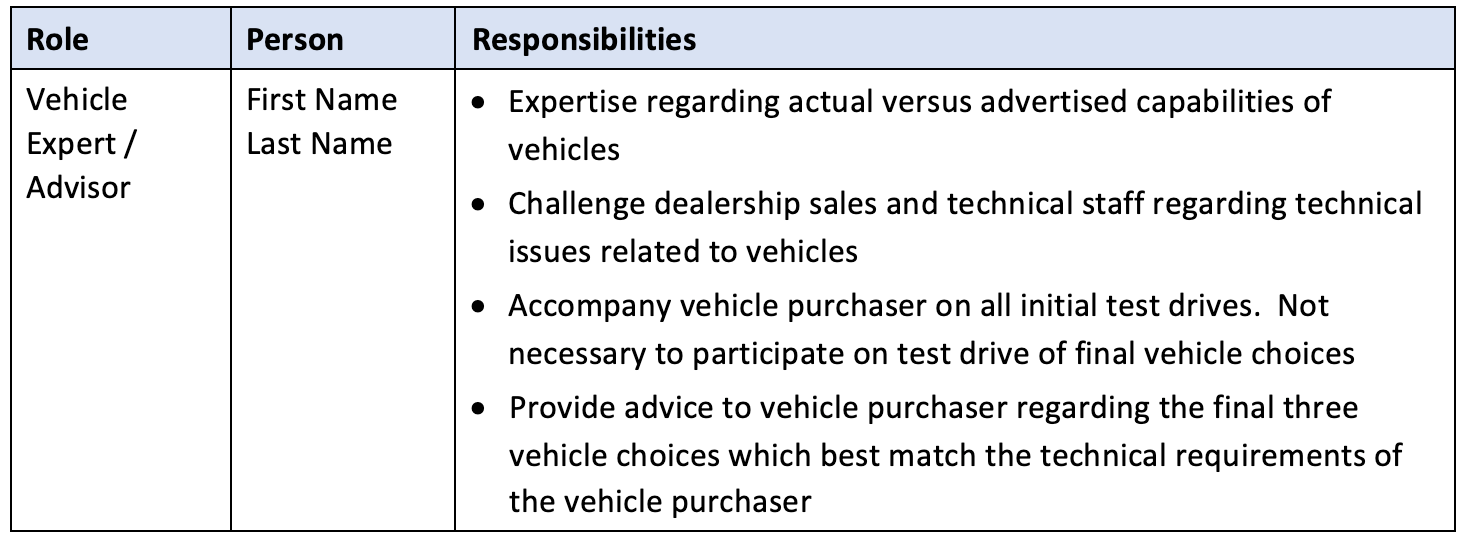Starting a Project
The purpose of this article is to explain the importance of measurable objectives to your project’s success.
Objectives are project pieces under the OVERSEE domain and the Outcomes segment in the MPM model.
The purpose of this blog article is to identify some important dos and don’ts to think about when creating your all-important set of project deliverables.
Deliverables are project pieces in the Control domain and in the Outcomes segment Project Management MPM model.
The purpose of this blog article is to cover how you can use a simple approach to create the best set of deliverables for your project.
In the MPM model, deliverables are covered in the OVERSEE domain under the Outcomes segment.
This article covers how to create your most effective project deliverables to ensure your project is considered successful.
Deliverables are covered in the OVERSEE domain under the Outcomes segment in the MPM model.
The purpose of this article is to cover important considerations when working with different types of stakeholders to engage with them most effectively for your project’s success.
Stakeholders is one of the project pieces under the People segment within the LEAD domain in the MPM model.
The purpose of this article is to cover the different types of stakeholders that are important for your project’s success.
Stakeholders is one of the project pieces under the People segment within the LEAD domain in the MPM model.
The purpose of this blog is to relate a story to provide some insights that might help you in creating and managing your steering committee and stakeholder participation.
The Steering Committee is covered under the project pieces of Roles, Organization, Stakeholders, and Communications which are all under the People segment within the LEAD domain in the MPM model.
The purpose of this blog is to relate a story to provide some insights that might help you in creating and managing your steering committee and stakeholder participation.
The Steering Committee is covered under the project pieces of Roles, Organization, Stakeholders, and Communications under the People segment which is in the LEAD domain of the MPM model.
The purpose of this article is to cover how to launch your best steering committee to put your project on a successful trajectory, and get your charter built at the same time.
The Steering Committee is covered under the project pieces of Roles, Organization, Stakeholders, and Communications which are all under the People segment within the LEAD domain in the MPM model.
The purpose of this blog is to cover three iterative steps to take when creating roles and assigning responsibilities.
Roles are under the LEAD domain and within the People segment in the MPM model.
The purpose of this blog is to define the steps to take when clarifying the roles decision structure for your project. In other words, how are decisions made? Roles are covered under the LEAD part under People in the MPM model.
The purpose of this article is to understand key aspects of managing assumptions.
Assumptions are project pieces covered when building the charter in Step 1, INITIATE and RATIONALIZE, but are under the LEAD domain and Motive segment in the MPM model.
The purpose of this blog post is to cover some examples of using Description for the background to explain your purpose and increase interest and engagement from your stakeholders.
Description is under the LEAD domain, and Motive segment in the MPM model to describe the purpose for your project; and it is central to creating the Charter in Step 1, INITIATE and RATIONALIZE.
The purpose of this blog post is to cover refining a purpose statement to ensure it is neither too narrow nor too broad and is just right for your project’s success. Purpose is covered under the LEAD part under Motive in the MPM model.
The purpose of this blog post is to cover a simple way to present project risks for awareness and support during the INITIATE part of your project. Risks are covered under the INITIATE part in the Project Charter and under the LEAD part under Motive.
3 Key domains and 6 segments to noodle on before starting your project to increase your likelihood of success.
The purpose of this blog post is to go into a little more detail about the Description part of the Charter that supports the Project Purpose, so your Stakeholders are intrigued and engaged.
The purpose of this blog post is to cover creating a list of assumptions that helps you and your stakeholders to a clearer view of your project. Assumptions are covered under the LEAD part and Motive in the MPM model.
The purpose for this blog is to cover how and why creating a charter, even if very brief, helps ensure your project is successful before it starts. The project charter is in the INITIATE part of the MPM model.
The purpose of this blog is to address those projects that start without anything and to offer a solution that is quick to create and at least gets it started with a simple one-pager.
The purpose of this blog article is to cover Adoption which is helping people successfully integrate the changes introduced by the project into their personal ways of operating. Adoption is under the LEAD part and under People in the Project Management MPM model.
The purpose of this article is to cover specific ways to boost stakeholder engagement, so they are interested, committed, involved, and support your project to make it successful.
The purpose of this blog post is to cover INITIATE, the first part of the five-part Project Management MPM Model. INITIATE is about setting up your project for the highest probability of success by gathering initial information about all of the important items for your project and reviewing that with the people that are going to help you succeed.
The purpose of this article is to help you know what a project is and lay out the differences between project work and operational work. This helps you with project readiness, which is under the INITIATE and RATIONALIZE step of the MPM model.
























